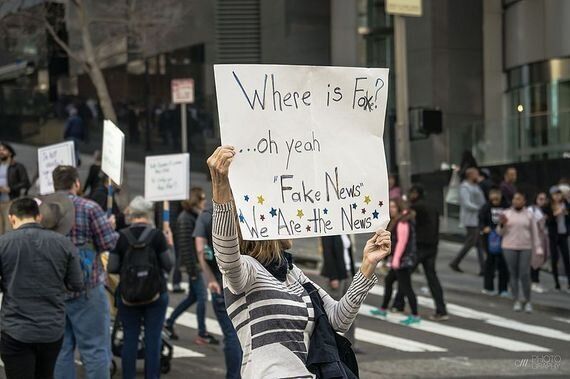
Trust in news used to be a given. We'd open the paper, read it and believe what we were being told. We were aware that the news may be spun in a particular way depending on the political agenda of the paper or source, but never had reason to question the facts that were reported.
Today things aren't so easy. Spin has given way to fabrication - either deliberately or by a failure to fact check. And social media makes it easy for false stories to spread round the world while the truth struggles to get its boots on. The result - the media is no longer trusted. Just 22% of Brits believe 100% of the content they see in the 'news'.
Whenever we see a statistic like that, there's an urge to find someone to blame and it's the social media giants who have copped most of the criticism for their apparent willingness to allow fake news to spread across their platforms. However, it would be a disservice to consumers everywhere if we merely accepted that and didn't question what other factors have contributed to this decline in trust.
It's clear that these trust issues are grounded in personal experience - with 42% of us reporting to have seen or read a piece of news recently we didn't believe to be true. If publishers are going to regain our trust they need to look at the content that they are publishing and then consider what else they can do to combat fake news.

Credit: Wikimedia Commons
Who do we trust?
An obvious first step is to take every opportunity to incorporate visual proof into news reports. Nothing delivers more confidence as to a story's truthfulness than being able to view it first hand. However, journalists can't be everywhere all of the time and even when they're at events, they are often limited to one perspective.
That's where eyewitness video comes in. It's not a new phenomenon, but one that our research shows the public want to see more of, particularly when they are seeking to understand the truth behind a news event. Very little happens in today's world that isn't witnessed by someone with a smartphone, or other device that allows them to record video of an event as it unfolds. Stand-alone or embedded in a news report, eyewitness video provides that visual evidence we know the public crave.
When asked who they would trust to deliver news to them about an incident, 45% of Brits said a member of the public, while just 30% said they would trust a journalist. Fact checking and story verification are now a communal activity, involving multiple bystanders and their unique digital records of an event. In short, we want to hear from people like us about what they saw - without filter or third hand reporting.
Eyewitness emotion
Eyewitness video is powerful not only because it's a first-hand, real-time record but also because it is able to prompt an emotional response. If you read a report of a cyclist being involved in a crash, it is one thing but if you see the events unfold via the helmet camera of an adjacent cyclist, your reaction will inevitably be much stronger. Words describe an event to us, but video lets us see it.
In this way, video has the power to build both audiences as well as trust. When asked, 36% of people said that a media report incorporating eyewitness video would make them more likely to trust that report. However, must not see such steps as a shortcut and just publish the first piece of video they come across. As with any other source, video needs to be questioned and verified before it is published, broadcast or shared. As ever, the job of a journalist is not just to report, but also to report accurately.
Controlling content
It's clear the media industry is at a crossroads. These uncertain times demand rigorous fact checking and media organisations remain the best source of this. But, there is work to do to regain the public trust and prove they can be a trusted source of information.
It's a problem no one publisher or platform can solve alone. This is an issue which the industry must solve together.
It won't be solved by sweeping statements, or by picking a fight with political leaders. Instead it will be solved one step at a time and the first step has to be involving the public - asking where their frustrations are and what they'd like to see more of in reporting.
Doing this will mean less reliance on anonymous "official" sources and a move towards showing their working - and what better way to do that then by incorporating video shot by eyewitnesses?
